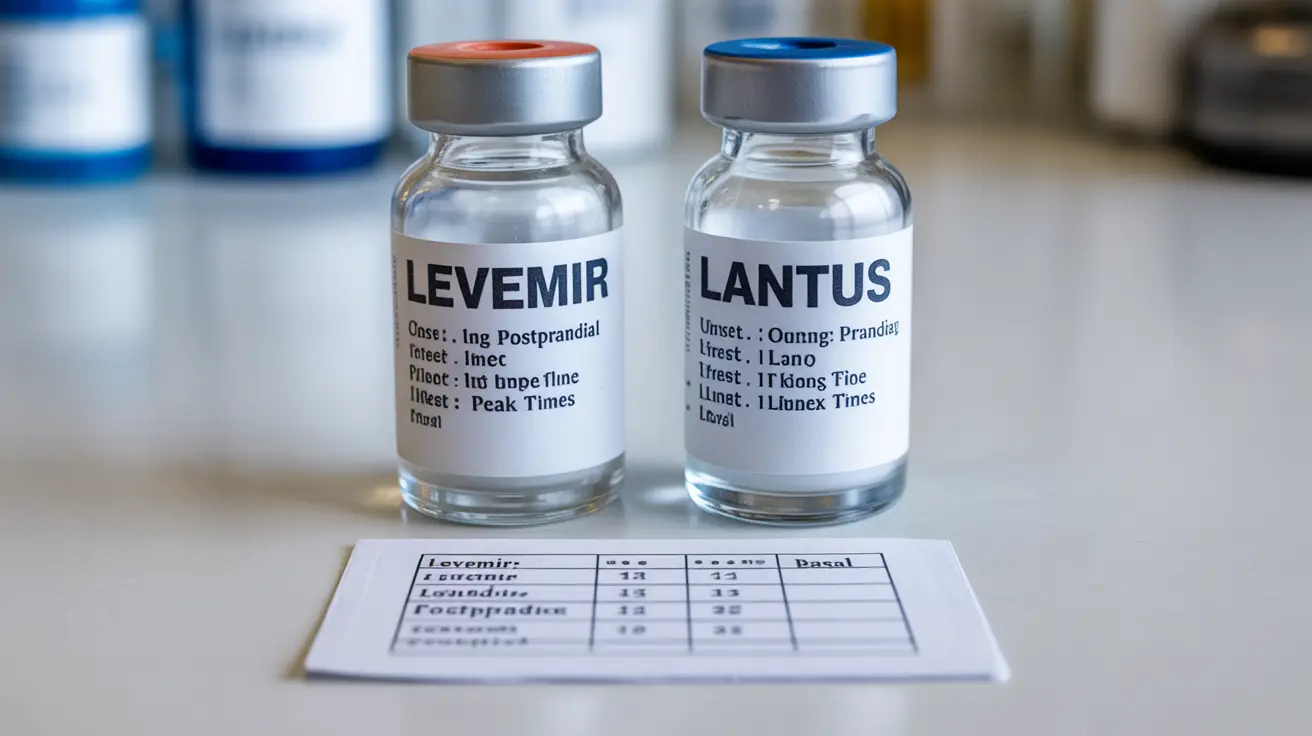For people managing diabetes, choosing between different types of long-acting insulin can be crucial for effective treatment. Levemir and Lantus are two commonly prescribed long-acting insulin medications, and while they serve similar purposes, they have distinct characteristics that set them apart.
Understanding these differences can help patients and healthcare providers make informed decisions about diabetes management. Let's explore how these two insulin options compare and what makes each unique.
How Levemir and Lantus Work
Both Levemir (insulin detemir) and Lantus (insulin glargine) are long-acting basal insulins that help control blood sugar levels throughout the day. However, they work slightly differently in the body:
Lantus Characteristics
- Provides up to 24 hours of blood sugar control
- Generally taken once daily at the same time
- Forms micro-precipitates after injection, releasing insulin gradually
- Has no peak action time, providing relatively steady insulin levels
Levemir Characteristics
- Duration of action typically 18-23 hours
- May require twice-daily dosing for some patients
- Binds to albumin in the body, creating a more prolonged effect
- May have a slight peak in action
Dosing and Administration
The dosing schedule represents one of the most notable differences between these medications. Lantus is typically administered once daily, while Levemir might require either once or twice-daily injections, depending on individual patient needs and response to treatment.
Effectiveness and Clinical Outcomes
Clinical studies have shown that both medications are effective at controlling blood glucose levels when used appropriately. The choice between the two often depends on individual factors such as:
- Patient's daily schedule and lifestyle
- Individual response to treatment
- Cost and insurance coverage
- Personal preference for dosing schedule
- Specific diabetes management goals
Cost Considerations and Availability
The cost landscape for these medications has changed significantly with the introduction of biosimilars. Lantus now has several biosimilar alternatives available, which can make it more affordable. Currently, Levemir does not have any FDA-approved biosimilars on the market.
Safety Profile and Side Effects
Both medications have similar safety profiles, with common side effects including:
- Injection site reactions
- Low blood sugar (hypoglycemia)
- Weight changes
- Allergic reactions (rarely)
Frequently Asked Questions
What are the main differences between Levemir and Lantus insulin?
The main differences lie in their duration of action and dosing schedules. Lantus typically provides 24-hour coverage with once-daily dosing, while Levemir may require twice-daily dosing for some patients and usually lasts 18-23 hours.
Can Levemir and Lantus be used interchangeably for diabetes management?
While both medications are long-acting insulins, they are not directly interchangeable. Switching between these medications should only be done under medical supervision, as dosing adjustments may be necessary.
How often do I need to inject Levemir compared to Lantus?
Lantus is typically injected once daily, while Levemir may be prescribed for either once or twice-daily injection, depending on individual patient needs and blood sugar control.
Are the side effects and effectiveness of Levemir and Lantus similar?
Yes, both medications have similar effectiveness and side effect profiles. The most common side effects for both include injection site reactions and the risk of hypoglycemia.
Is there a biosimilar available for Levemir or Lantus, and how does that affect cost?
Lantus has several FDA-approved biosimilars available, which can make it more cost-effective. Currently, there are no biosimilars available for Levemir. This difference can significantly impact the out-of-pocket costs for patients.
Always consult with your healthcare provider before making any changes to your insulin regimen, as they can help determine which option is best suited for your specific needs and circumstances.




